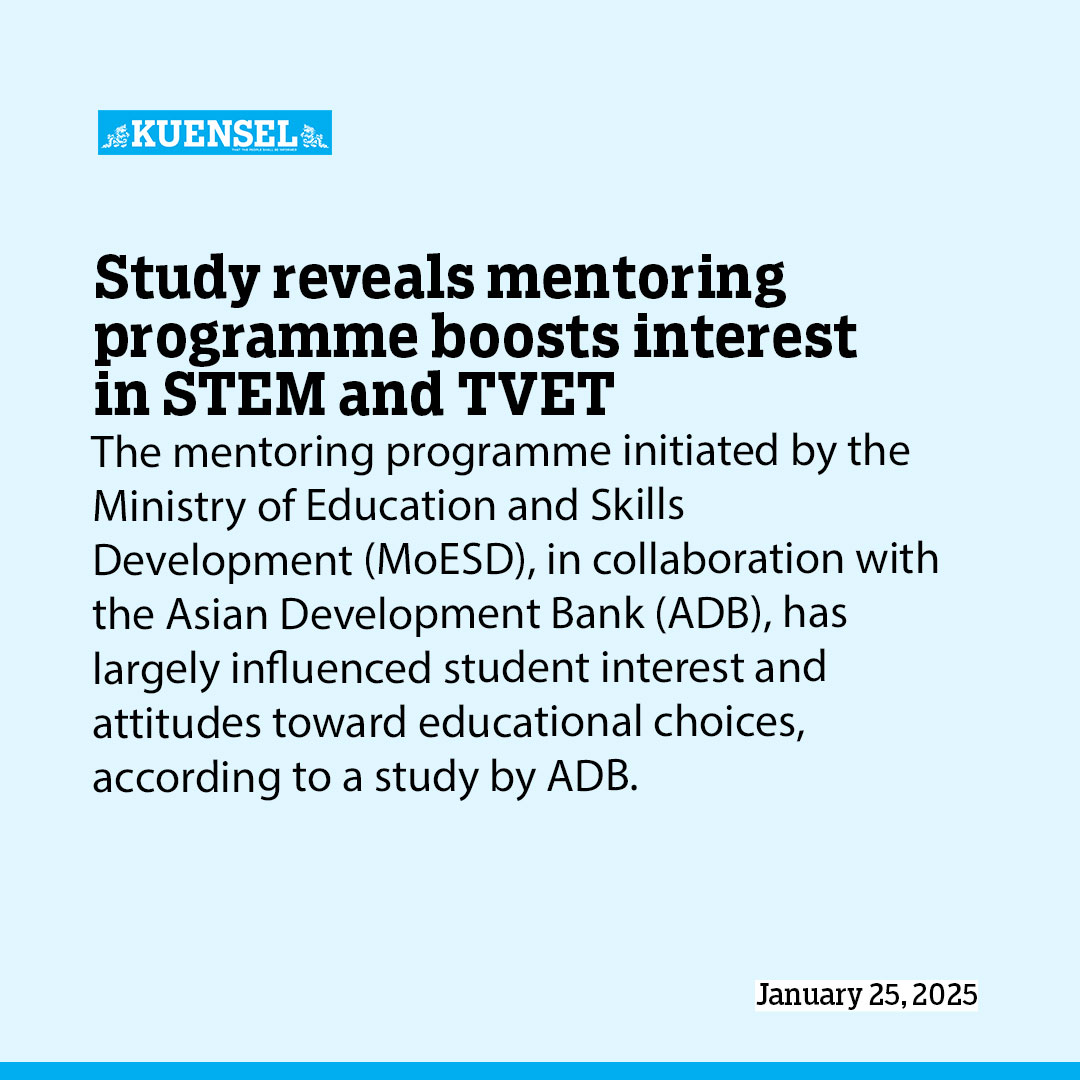KP Sharma
The mentoring programme initiated by the Ministry of Education and Skills Development (MoESD), in collaboration with the Asian Development Bank (ADB), has largely influenced student interest and attitudes toward educational choices, according to a study by ADB.
The study carried out by a group of experts stated that the programme aims to guide Class 10 and 12 students in making informed decisions regarding science, technology, engineering, and mathematics (STEM) and technical and vocational education and training (TVET).
Despite increased interest, the study found that the enthusiasm has not resulted in higher enrolment rates in either field.
Under the programme, Class 10 students were mentored on STEM education, while Class 12 students were introduced to TVET pathways.
The STEM programme paired students with undergraduate or graduate mentors who provided information on STEM education and shared academic experiences.
Similarly, TVET mentoring involved four sessions where current or former TVET students shared insights on entry requirements, application processes, job prospects, and labour market outcomes, along with their personal experiences.
To evaluate the impact, a two-stage randomised controlled trial was conducted across 76 schools with Class 10 students and 36 schools with Class 12 students.
Students were divided into treatment, spillover, and control groups. In total, 140 mentors guided 700 mentees in the TVET programme, while 200 mentors supported 1,000 STEM mentees.
The study found that STEM mentoring increased students’ interest in science. Class 10 students in the treatment group were 16.2 percent more likely to choose the science stream as their top preference compared to 43.6 percent in the control group.
“The programme also improved students’ perceptions of science, self-assessment of their abilities, and beliefs about societal approval. Encouragingly, STEM mentoring contributed to better academic performance, with a 5.2 percentage point increase in national board exam pass rates for treatment students,” the study stated.
However, these changes did not lead to a statistically major rise in the number of students pursuing the science stream in subsequent years.
In the TVET programme, Class 12 students showed a 5.9 percent increase in considering TVET as one of their top three career choices compared to the control group’s average of 15.9 percent.
“The programme enhanced students’ perceived knowledge of TVET, including the lives of TVET students, job prospects, and labor market outcomes.”
Further, it failed to alter attitudes toward blue-collar jobs or reduce the stigma associated with TVET.
Similarly, not much increase was observed in students applying to or enrolling in TVET institutes, nine months after the programme.
The study highlighted that differing societal perceptions of STEM and TVET played a significant role in these outcomes.“While STEM subjects enjoy high regard, TVET continues to battle stigma.”
Although the programmes generated greater interest in both fields, additional measures are necessary to help students make concrete career decisions.
This includes preparing STEM students for competitive exams and addressing biases against TVET.


